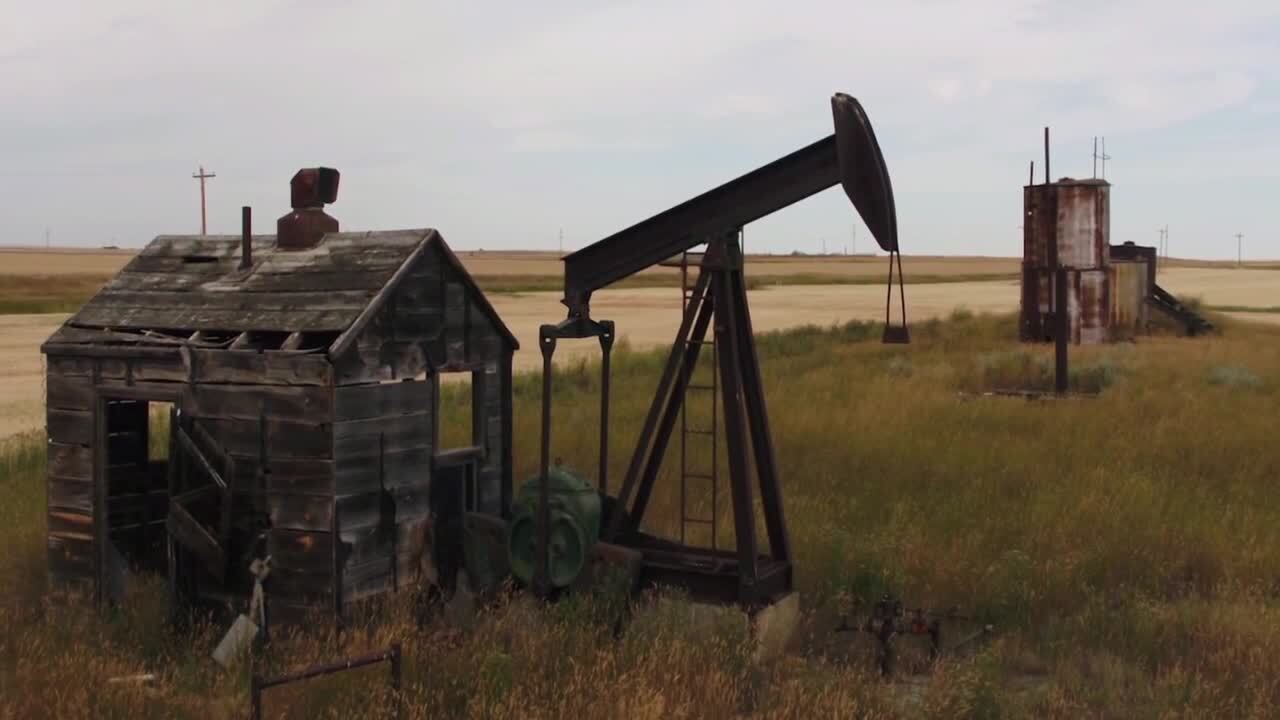Montana is set to receive $25 million in federal money to help cap more than 230 "orphaned" wells, many of which have sat collecting rust and emitting dangerous chemicals for years.
Abandoned wells were often once operating gas or oil wells that have been long forgotten about by their owners, but not by the landowners who have to deal with the repercussions of an unplugged well.
Many of these wells were initially abandoned before land restoration requirements were put into place, acting as a loophole for the owners to forget about their wells.
This issue has been recognized and is being worked on by the state. Montana already sets aside $650,000 every two years to plug orphaned wells and aims to plug all wells by 2025.
Ben Jones, administrator of Montana's Board of Oil and Gas Conservation (BOGC), said that the board has had an orphaned well-capping project in operation since the early 90s, and have successfully capped over 430 in Montana. The board first works to identify the orphaned wells of Montana, and then ranks them on a list based on priority, with the most harmful ranked the highest.
Jones says the list currently has about 238 orphaned wells on it, and five of those wells are in Yellowstone County.
A lot of these landowners find themselves in these situations after inheriting the land from parents or grandparents who benefitted from the money the original well owners paid for the use of the land, not knowing that the companies would abandon their wells.
The harm ranges from methane emissions, contamination of drinking water and combustion. The wells can also hurt farmers’ ability to cultivate and harvest their land.
Many landowners agree that having these orphaned wells on their property can be a headache, literally. Sam Stewart was born and raised near Shelby and has had the misfortune of dealing with 16 orphaned wells on his land that he bought from a neighbor over 40 years ago.
At the time of purchase, Stewart believes only three or four of the wells were still in operation. He questions how these companies can justify abandoning these wells.
“We know there’s people pumping them and selling the oil, and why they weren’t tied to any responsibility is kind of a curiosity,” Stewart said.
Stewart had to get creative when planning how to farm this land, due to the 16 rusty obstacles in his path. He had to maneuver his farm equipment around these wells every year, until one man’s passion project came to the rescue.
Stewart was relieved to find that a portion of these wells would be plugged by a nonprofit that originated in Montana. A team came out, surveyed the wells, and successfully plugged 10 wells and restored the land.
This plugging project was all made possible thanks to one man’s drive to fix a problem that he, like many others, did not realize existed. That is how the Well Done Foundation came to be.
Curtis Shuck worked various careers in the oilfield for nearly 30 years before walking away from the production side to make a difference. Shuck was driving through Northern Montana when he discovered an abandoned well–and decided that same night that he needed to make a change.

"I just couldn’t believe what I saw, and that’s really what started the mission for me. It was that night as I was driving from Shelby back to Bozeman that I couldn’t get that image out of my mind. That was three years ago,” Shuck reflects.
Since the foundation was started, multiple teams have managed to plug 22 wells nationwide, including multiple in Montana. While the foundation now operates nationwide, it plans to plug an additional 10 wells in Montana before the end of the year.
The first well the foundation was able to plug was on Stewart’s land on Earth Day three years ago. While they have already plugged 10n wells on Stewart’s land, they plan to plug the remaining six after finishing up some of the other projects they are working on.
Similarly to the Board of Oil and Gas Conservation's process to identify and rank orphaned wells, the Well Done Foundation identifies, surveys, plugs and restores the land based on priority, with the most dangerous wells ranked the highest.
The foundation operates based off of donations, corporate sponsors, and sales of their trademarked carbon offset products.
Shuck emphasizes that in order to solve this problem fully, more people need to join in.
“This is a team sport. It’s an opportunity for the industry, communities, and environment to really participate in doing a good thing, without pointing fingers and laying blame,” Shuck said.
“The real story here is that anybody can make a difference. If I can be inspired by what I saw and sort of take the challenge and go after the problem, then anybody can,” Shuck added.
The money Montana is receiving is a major first step in the recognition of this growing problem. If the funding isn’t enough to plug all of the orphaned wells, the Well Done Foundation can help.
To learn more, visit the Well Done Foundation website.
TRENDING ARTICLES
- Carnival underway in Great Falls
- New apartments for Great Falls
- Obituary: Styler Lee Edwards
- Queen Elizabeth II has died
- Inmate dies at Cascade County jail
- Montana bar owner: 'I’m not racist'




